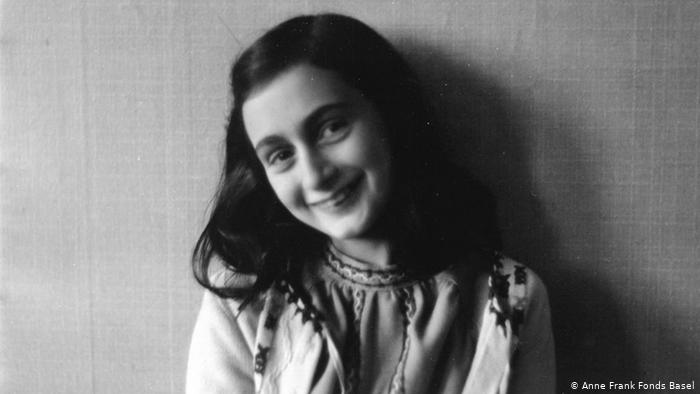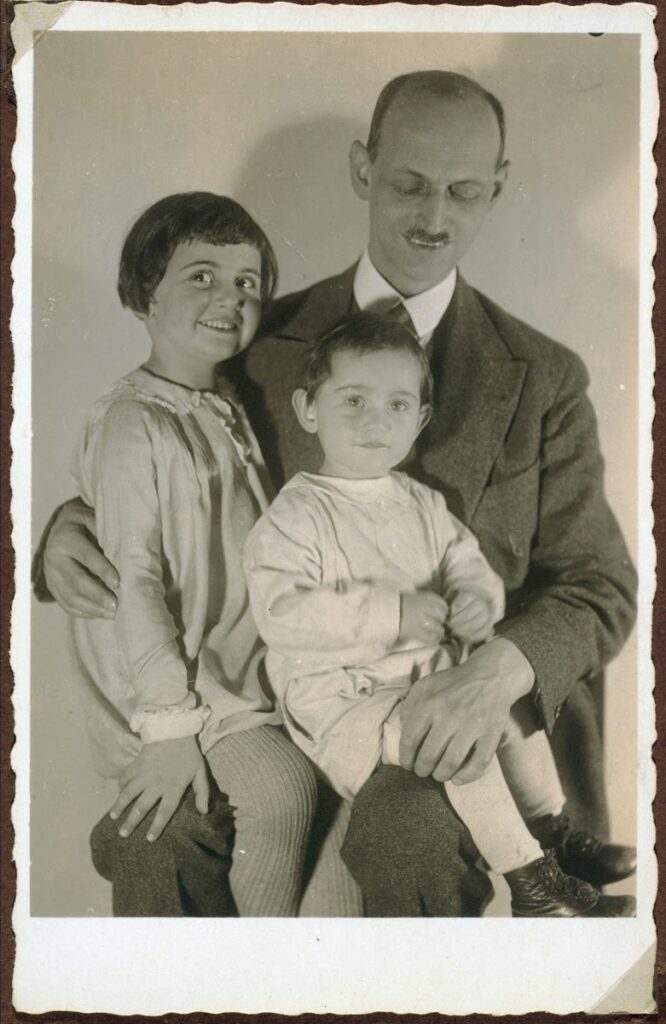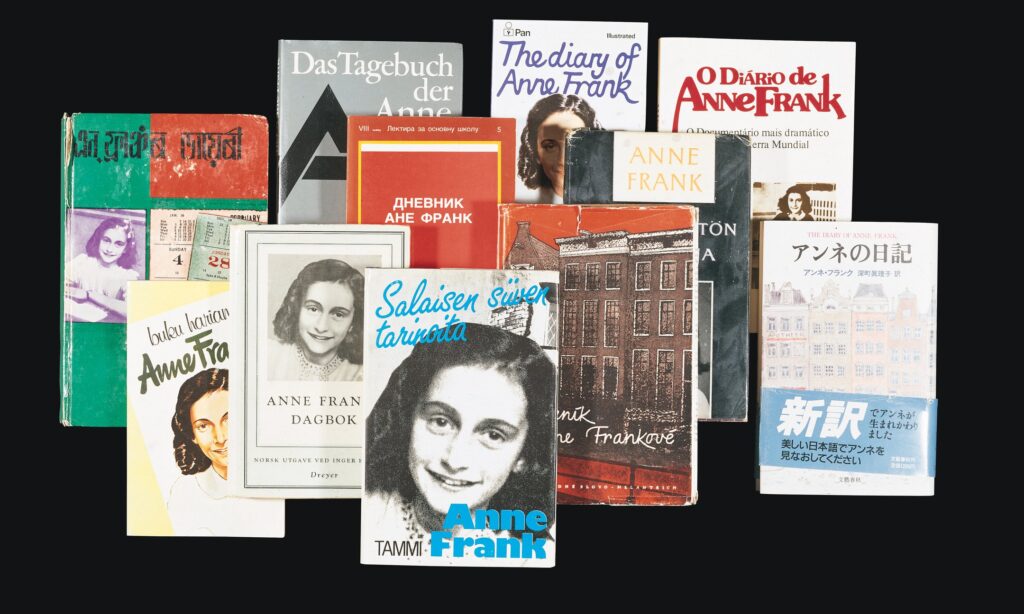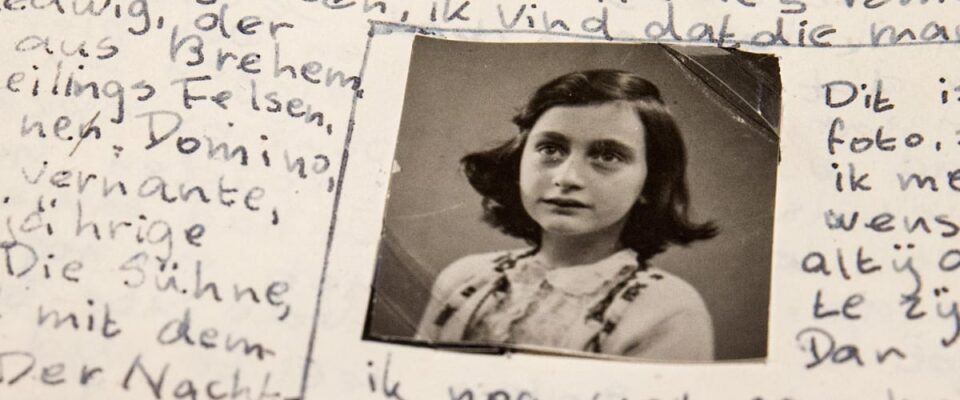Anne Frank (1929-1945) was a young Jewish girl who moved to the Netherlands from Germany with her family after Adolf Hitler’s rise to power in 1933. Life for Jews in Germany was becoming increasingly difficult, and Anne’s father felt that German-occupied Amsterdam would be safer. In 1942, Anne and her family went into hiding in a secret annex behind her father’s business where they remained for two years. In 1944, the Franks were discovered by the Gestapo and were sent to concentration camps. Only Anne’s father, Otto Frank, survived. Anne Frank’s diary which was written while in hiding, was first published in 1947 and is one of the most widely read accounts of the holocaust. Translated into almost 70 languages, the Diary of Anne Frank continues to inspire millions of people around the world.
Who Was Anne Frank?
Anne Frank was born in Frankfurt, Germany on 12th June 1929 to Edith Hollander Frank (1900 – 1945) and Otto Frank (1889 – 1980). Less than four years after she was born, in January 1933, Adolf Hitler was appointed chancellor of Germany and a series of measures were soon enforced, aimed at persecuting the Jewish citizens of Germany. In an attempt to escape the persecution and poor economic situation, Anne’s family decided to move to the Netherlands. There, Otto established a company that produced pectin, a gelling substance used to make jam.
In 1935, Anne started school in Amsterdam and earned a reputation as lively, popular girl. She learned the language, made new friends and shortly settled in. Her father worked tirelessly to build up his business to support his family.

Nazi Germany Invades the Netherlands
On 1st September 1939, Nazi Germany invaded Poland, marking the start of World War II. Shortly after, on 10th May 1940, the Nazis also invaded the Netherlands. With the almost immediate surrender of the Dutch army, the Nazis introduced new laws and regulations that made life increasingly restrictive and dangerous for Jewish people. For example, Jewish people were no longer allowed to visit parks, cinemas, or shops owned by non-Jews. Soon later, Otto Frank lost his company as it became illegal for Jewish people to run their own businesses. All Jewish children, including Anne, had to attend separate Jewish schools.
Between the summer of 1942 and September 1944, over 100,000 Jewish people in Holland were deported to concentration camps by the Nazis.
Anne Frank’s Family Goes into Hiding
When Anne’s sister, Margot, received a letter ordering her to report to a labor camp in July 1942, her parents became very suspicious and decided to go into hiding the next day. They moved into a secret apartment in the annex of Otto Frank’s business premises located at Prinsengracht 263 in Amsterdam. The entrance of the apartment was hidden behind a moveable bookcase. A week later, the Franks were joined by Otto’s business partner, Hermann van Pels (1898-1944), his wife Auguste (1900-1945), and their son, Peter (1926-1945). The Van Pels were also Jewish. A group of Otto’s employees risked their lives to help the families in hiding by smuggling food, supplies and news of the outside world. In November 1942, the families were joined by Fritz Pfeffer (1980-1944), the Jewish dentist of one of Otto’s employees.
With eight people living in the cramped apartment, life was tense. The group could never go outside, and they lived in constant fear of being discovered. During the day, they had to remain very quiet so that they wouldn’t be heard by the people working in the warehouse below.

Anne Keeps a Diary
Shortly before her family went into hiding, Anne received a diary as a gift for her 13th birthday. During the two years in hiding, Anne wrote in her diary to pass the time, addressing her diary entries to an imaginary friend called Kitty. She wrote about daily life in the annex and documented her thoughts and feelings. As well as writing about typical teenage problems such as crushes on boys and arguments with her mother, she wrote about the war, her identity and humanity, demonstrating a high level of maturity. Anne also wrote short stories, started a novel and copied passages from books she read that stood out to her.
The Discovery of the Secret Annex
On 4th August 1944, all eight people in the Secret Annex were discovered by the Gestapo, who had been informed of their hiding place by an anonymous tipster. The Franks, Van Pels and Fritz Pfeffer were arrested and sent to Westerbork, a holding camp in the Netherlands, where they remained until September. From there, the group was transported to Auschwitz-Birkenau concentration camp in Poland. Instead of being sent to the gas chambers, Anne and Margot Frank were transported to Bergen-Belsen concentration camp in northern Germany. In February 1945, both sisters died of typhus at the camp. Just a few weeks later, on 15th April 1945, Bergen-Belsen was liberated by British forces.
Anne Frank’s father, Otto was the only member of the group to survive. He was liberated from Auschwitz concentration camp by Soviet troops on 27th January 1945.

The Diary of Anne Frank
Following his liberation from Auschwitz, Otto Frank returned to Amsterdam. Miep Gies, Otto’s former secretary who helped the families in hiding, gave him five notebooks and several hundred loose papers containing Anne’s writings. Shortly after the Franks’ arrest, Gies recovered the papers from the annex and hid them in her desk. Otto read that his daughter wanted to become an author or journalist and that she hoped that her writing would one day be published. Anne had also been inspired to edit and compile her writing after hearing a radio broadcast in March 1944 from the Minister of Education of the Dutch government in England. The broadcast urged people to keep journals, documents and letters to help provide a record of daily life under the Nazis. Anne compiled her individual diary entries into one story, titled Het Achterhuis (The Secret Annex).
After receiving all Anne’s writings, Otto helped compile them into a manuscript that was published in the Netherlands in 1947, titled “Het Acheterhuis” (Rear Annex). Despite an initial rejection by U.S publishers who claimed that the work was too depressing, “The Diary of a Yong Girl” was eventually published in America in 1952. The book went on to sell millions of copies all around the world and has been adapted for stage and screen. In 1960, the Secret Annex became a museum: The Anne Frank House, which is a dedication to her life. Until his death in 1980, Otto Frank was closely involved with the museum and hoped that his daughter’s diary would raise global awareness of the dangers of anti-Semitism, discrimination and racism. The book has been regarded a testament to the unbreakable nature of the human spirit and immortalizes Anne Frank’s inspirational and heartbreaking story.


